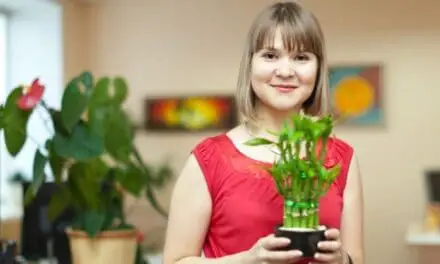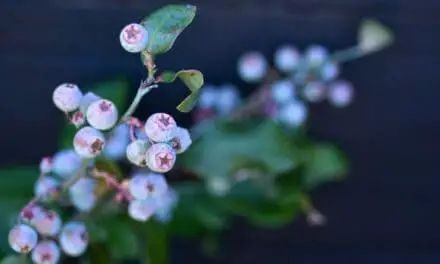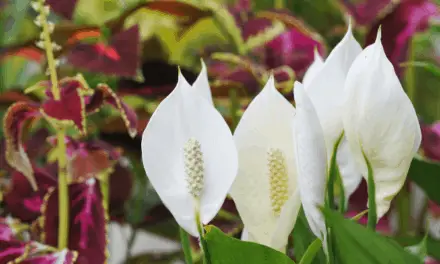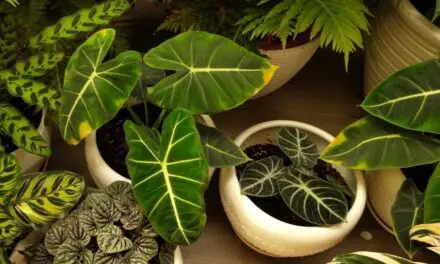When you’re doing your best to care for plants, it can be heartbreaking to see the flowers and leaves turning brown.
For African violets, there are a few reasons why this could be happening.
Table of Contents
Why Are My African Violet’s Flowers Turning Brown?
Your African violet’s flowers are most likely turning brown because the plant is either not getting enough light, being over or under-watered, or it is not receiving enough humidity.
While putting your African violet in direct midday sunlight isn’t a good idea, they do thrive on direct morning or late afternoon light and should do well with fluorescent light or indirect bright light.
In this article, we’re going to look at the reasons why you might be having trouble with your African violet’s flowers turning brown, as well as giving suggestions for how to fix these common issues.
Not Getting The Right Light
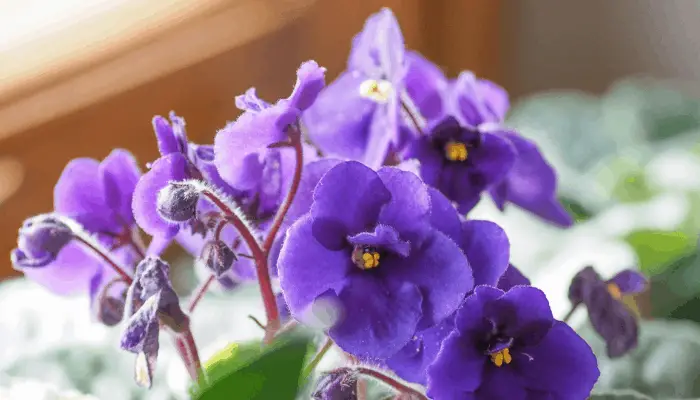
Thankfully, this issue has a pretty simple fix:
African violets don’t like the super-bright daylight that comes in the middle of the day, but they do great with early morning or late afternoon light.
Do your best to place the plant next to a window that gets direct sunlight in the morning or late afternoon.
Partially close the blinds during the midday or noon hours, so that the more intense light during that time won’t harm the plant.
Another thing to keep in mind when it comes to your African violet and light is that, unless all sides of the plant are receiving the same amount of light, the violet will grow unevenly.
Your African Violet Is Getting Too Much Light
As with many things in life, caring for a plant is all about balance.
While this type of plant needs a lot of light, there is such a thing as getting too much.
That, too, can cause your African violet’s flowers to turn brown.
Keep it back from cold window glass and try not to let your violet be in the direct path of the harsh midday sun.
Also, rotate the plant so that all sides of it are receiving approximately the same amount of light.
If instead of using natural light, you’re growing your African violet using grow lights or fluorescent lights, remember to turn them off for eight hours or so every day, as these plants bloom best when they have about that amount of darkness each day.
Related Article: How To Treat Dry And Crispy English Ivy Leaves
Watering Your Violet Too Much Or Too Little
The Flowers of your African violet could begin to turn brown if its soil is too wet or too dry.
This is a pretty common problem for most plants.
As plant owners, a lot of us have a tendency to water plants way more than they actually need to be watered.
For African violets, you only need to water them when the soil is dry to the touch.
Before bringing out the watering can, make sure to test the soil first, and then if the top one inch of soil feels dry to the touch, you can give the plant enough water so that the soil feels moist, but not soaking wet.
Overwatering your African violet can cause problems like root rot, which can lead to leaves and flowers turning brown.
Wait until the soil is dry before watering again, and try not to get any water on the crown of your violet.
Allowing too much water to build-up on the leaves may also lead to disease and brown spots forming.
Never Pour Water Over Your Violet’s Leaves
The African violet is an arid-loving plant and has a slight bit of fur on its leaves which helps to reduce the rate at which water evaporates from them and this makes the plant intolerant to having water poured over it.
The Humidity in Your House Is Too Low.
African violets bloom best at 40-60% humidity, which is in the upper range of what the average house’s humidity level is.
And during the winter, especially, you may find that your house’s humidity levels drop far below that range.
When that happens, your African violet won’t thrive.
Its flowers won’t bloom, its leaves will dry up, and the plant’s growth will slow to a crawl.
To help raise the humidity around the violet, the first thing you can do is to group several plants together in the same area, making sure to keep them far enough apart that the leaves aren’t touching.
Just doing that can raise the humidity for your violet significantly.
Alternatively, you could put your violets on trays filled with pebbles and enough water to hit just below the top of the pebble level.
Another option, if your house is particularly dry, is to spritz the plant with a light mist once a day or so (though make sure not to do it at night).
Should You Remove Dead Flowers From Your African Violet?
Yes, you should remove dead flowers.
When you remove dead flowers, also try to remove any other dead or dying leaves or foliage too.
This process is called deadheading and it creates space and encourages more blooms to develop.
African violets can actually bloom for up to nine months of the year and this process helps them to do so.
Final Thoughts
These are the most common reasons why your African violet’s flowers may be turning brown, but they can all be sorted with some simple fixes.
If you notice your violet is looking a little brown, see if any of these problems might be the issue and make adjustments so your plant can get back to looking beautiful and healthy.

